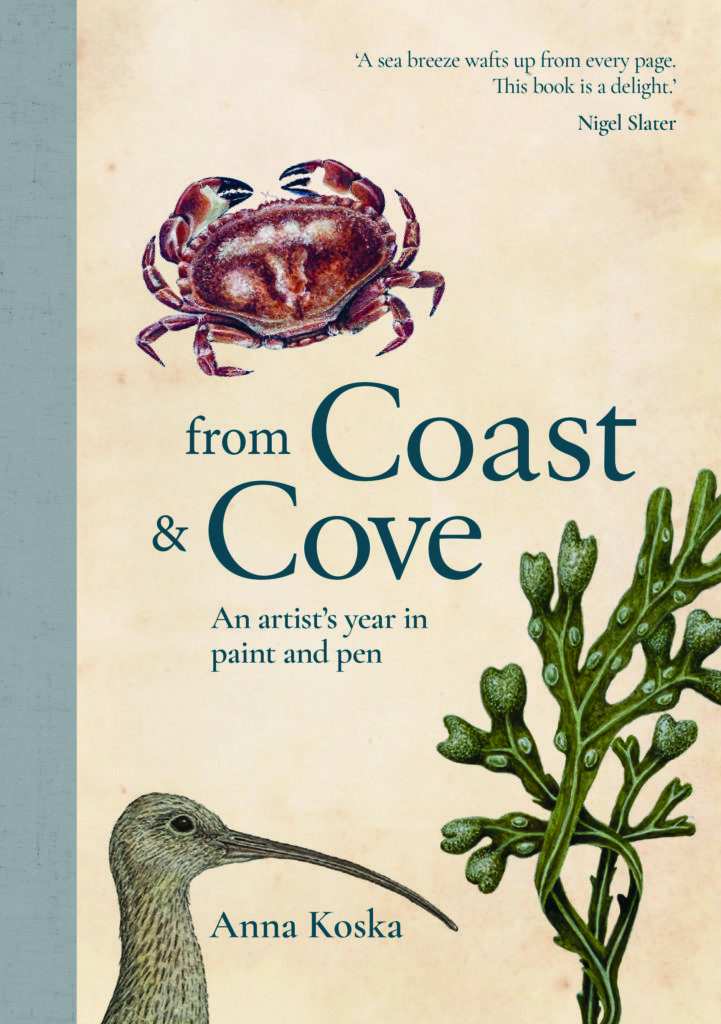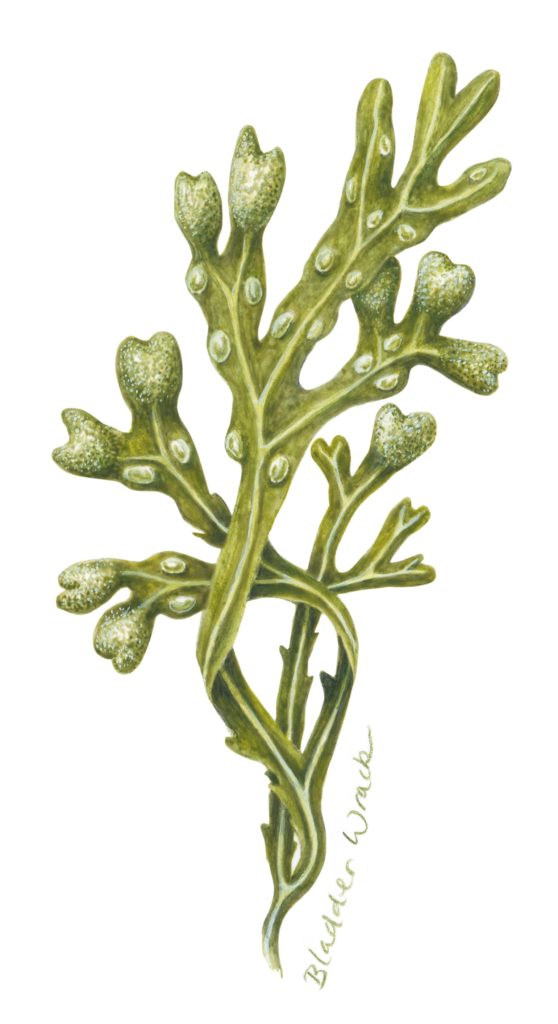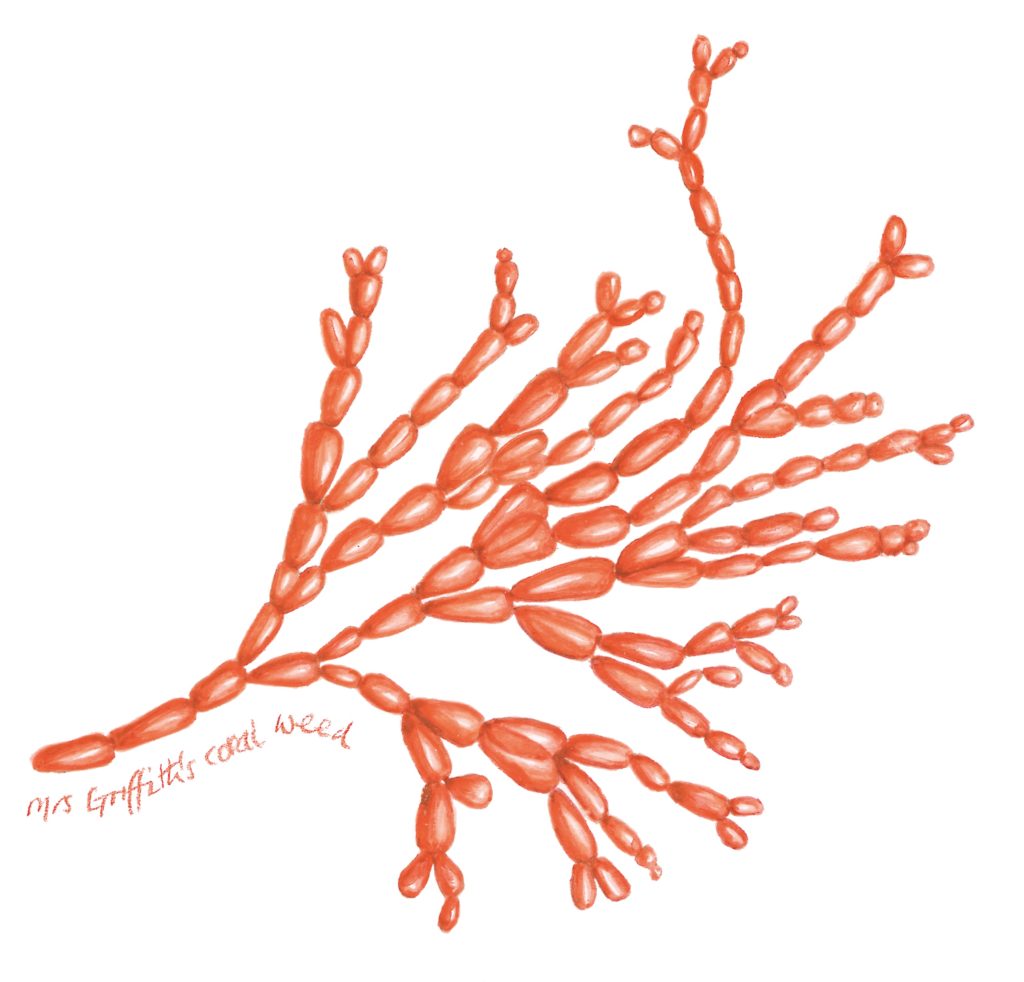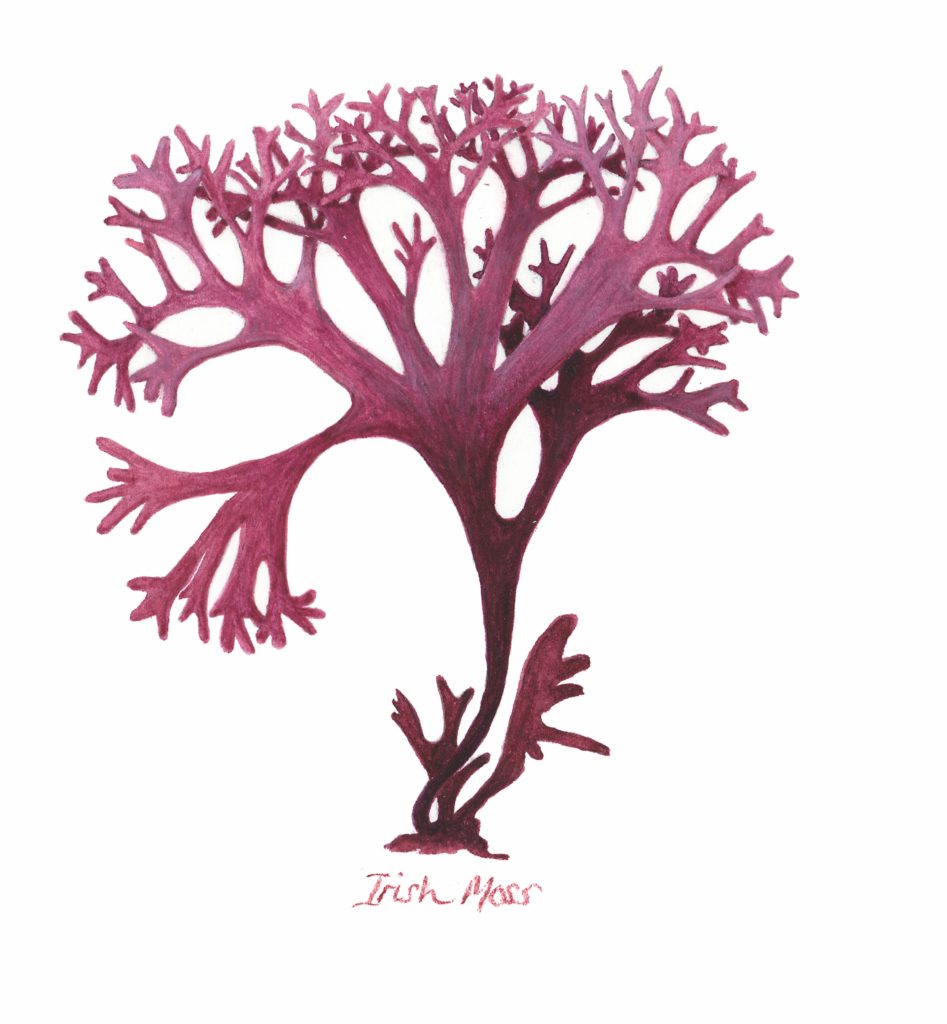In an extract from her latest book ‘From Coast & Cove: An artist’s year in paint and pen’, published by Pavilion, Anna Koska collects shoreline treasure in delectable hues.

23 January Water
6.6 degrees … giving, buoyant, exhilarating.
If you’d told me that the future me would enjoy, even look forward to, swimming in such temperatures, I’d have laughed and said only the very hearty and slightly unhinged would opt for so doing over a deep sofa, the weekend papers and a mug of tea. Clearly, I am ever so slightly unhinged; but happily so.

God Bless Mrs Griffiths
Swimming in the sea has been a challenge at times.
Yes, the mercury is inching its way down my old thermometer, but also the stretch of beach from where I usually swim has a sudden drop away after the first few steps. When the sea becomes a little livelier this drop can play into the hand of an incoming tide. Waves gather momentum and can dump an unsuspecting swimmer back on the pebble beach, now sporting a new and ruddy rash from exiting the impromptu ‘washing machine’. And if that hasn’t got them, there’s the inherent drag on their legs as they stagger out thinking they’ve cleared the water, only to be unfooted and face-planted by a sly retreating wave. Of course, I speak with authority on the subject, having enjoyed my fair share of giggles at the mercy of this sea.
For the last couple of weeks, the ocean has excelled herself, forming fleeting and intense alliances with passing storms. Together they’ve been sculpting titanic watery bodies that climb the air to dizzying heights before collapsing on to the battered shore with such pounding force that the beach reverberates to their drum.
On days like these, along with bringing a ball for Billie to catch, I’ve taken to stuffing my pockets with bags, because with every storm, the tideline becomes swollen with the untethered and unwary: treasure. While the winter-weary land provides little in the way of colour, the sea continues to give of herself, offering up the most delectable palette of hues in the form of seaweed. These colours range from the subtlest of blushes to hot-flush pink, from bottle green to parched sepia.
I’ve been searching for books about seaweed, and there’s a chance I may need a new shelf for the slow but steady collection I’m gathering. Having lived inland for many years, my knowledge of this kind of flora is lacking, but I’m keen to learn. And from what I’ve unearthed so far, there is so much more to seaweed than meets the eye.
My earliest recollection of seaweed is of a dampish sprawl that appeared one morning, hanging from a butcher’s hook outside our back door. My mother had been given this long and knotted specimen of bladderwrack by my uncle, who’d assured her that it was a better forecaster of weather than any weatherman on the television. At the time, I never understood just how this might work. To me, it looked like a sad and stranded sea creature. But it did seem a good predictor of rain. And perhaps there is a grain of working science to add weight to the story. When the air becomes damp before the onset of rain, the hygroscopic nature of the salt held within the structure of the seaweed naturally absorbs the moisture and renders the plant wet and flexible once more. This certainly seemed to be the case where ours was concerned. It would droop just a little lower, its dimpled air sacs miraculously reinflated. The seaweed lore then goes on to say that if the specimen becomes crisp and lifeless then dry and sunny weather is on the way. I suspect that for many, predicting a rain-free day by studying a piece of dead seaweed might be pushing it. In fairness though, the meteorologists are often no more reliable when it comes to forecasting sunshine. But beyond the rather dubious weather divining, I found it fun to burst the little pillows of air.

From then onward, any family trip to the beach couldn’t be considered a success unless I’d found some bladderwrack to squeeze and pop. I learnt that the best seaweeds were to be found casually draped over intimate gatherings of large rocks, which together formed perfect valleys for the intertidal pools. A variety of seaweeds would surround these pools, with their dipped tips swaying gently. A curious child reaching out an arm and sweeping aside the tresses might catch a glimpse of strawberry anemones, with tentacles in full bloom like the open face of a chrysanthemum. Transparent and sketch-like, tiny brown shrimp would pedal furiously for the safety of a shaded nook, and if the treasure hunter was lucky, a swarm of silvered, lesser sand eels might swirl and dart across the small, salty oasis.
I realize now that for me, those rock pools were not only charmed portals into another world but equally an escape from an otherwise rather dull one offered by grown-ups, who were more content to flop down on to the beach, chat, read and sleep. Sleep! Anathema to me, given that I’d already slept, all night! As an adult and parent, I can, of course, now appreciate why they might have needed to top up their reserves.
Today, as the winds are high once more, I’m picking over the bulky, lazy zigzag of debris to find specimens to bring home, label, press and paint.
The identification of seaweed doesn’t come easily to me, particularly when the specimens are no longer suspended in the sea. So, I’ve learnt to fill up an old enamelled roasting tin with water and submerge the seaweed in it. Each strand can then become wet, buoyant and spread its various appendages to approximate its original glorious self once more.
The common names of seaweed vary from the rather unimaginative yet visually correct – fan weed, clawed fork weed, winged weed – to the completely fabulous: bunny ears, furbelows, creeping tongue weed, beautiful eyelash weed. And then there’s a group that have given cause for great merriment, all prefixed with ‘Mrs Griffiths’s’: Mrs Griffiths’s fan weed, Mrs Griffiths’s little flower, Mrs Griffiths’s hairy basket weed. They always reduce me to childish giggles.

Mrs Amelia Griffiths was quite an extraordinary lady based here in Devon who, in the early 1800s, dedicated much of her life to collecting and identifying seaweed, and became responsible for raising awareness of the diversity of marine plant life in the area. Her reputation as a seaweed sage was even deemed sufficiently notable for the eminent Swedish botanist Carl Adolph Agardh to name a whole genus of red seaweeds ‘Griffithsia’ in her honour. The honour was a rarity, since women were seldom, if ever, recognized for their research and contributions towards anything that might encroach on the largely maledominated territory of ‘science’. Wholly appropriate then that he felt it important to Latinize her name!
Home now, and I’m sipping a welcome mug of tea while the soaking seaweeds – Irish moss weed and an exquisite bloom of Mrs Griffiths’s coral weed – quietly unfurl and inflate before my eyes. I will only ever be a very amateur botanist, but I am an avid enthusiast of this new branch of flora. And I’m itching to get my paints out and portray them.
Back to the bladderwrack… and of course we have some now, nailed up outside our kitchen window, and it’s remained determinedly soggy.
Remarkably accurate, given that it has rained almost relentlessly for the last month.
*
Anna Koska’s ‘From Coast & Cove: An artist’s year in paint and pen’ is out now and available here (£13.94).